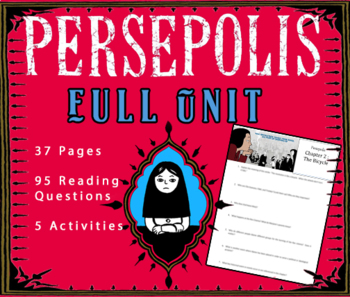A Unit for Marjane Satrapi's Graphic Novel Persepolis
- PDF
- Easel Activity
What educators are saying
Description
This is a 37 page unit for Marjane Satrapi's Graphic Novel Persepolis: The Story of a Childhood. It includes an anticipation worksheet to complete before reading, defined vocabulary terms for each chapter, 5 Activities to go with the novel, 95 comprehension questions (focusing on higher order thinking and visual literacy) broken into 19 chapters covering the entire first novel, an answer guide is included. If your interested in this be sure to check out all the other products for graphic novels that I have provide.
Be sure to check out these other, completely free, resources I have to aid in teaching with graphic novels and follow me on TpT for updates on new resources.
*****************************************************************************
Free Resources on Graphic Novels
Powerpoint Presentations on:
- An Introduction to Visual Literacy with Comics
- Introducing how to read comic panels
- How Comic Books are made
- The History of Racism in Comics
- Time, Closure, and Encapsulation in comic panels
- Background, Midground, and Foreground in Comics
- Bleed and Splash Panels
- Camera Angles in Comic Panels
Follow me on TpT for updates on new resources.






